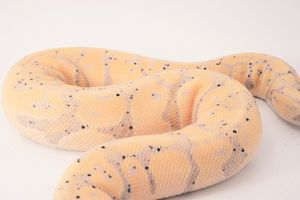
Dystocia, also known as “egg-binding”. Some snake species are oviparous (egg-laying) but others are viviparous (live-bearing). Dystocia is rare in viviparous snakes. Dystocia includes pre- and post-ovulatory stasis or obstructive dystocia. Pre-ovulatory stasis is when the ovaries have mature follicles but fail to ovulate or release the developing ova into the oviduct to develop shells. Post-ovulatory stasis occurs when mature eggs have developed in the oviduct but fail to be laid. A number of factors influence the development of either of these conditions and not all those factors are completely understood. However, without treatment, either condition will eventually lead to sickness and left untreated, death. Common causes include poor care or nutrition, lack of appropriate nesting sites, poor physical condition, nutritional secondary hyperparathyroidism, malnutrition, other dietary imbalances, endocrine problems, egg yolk coelomitis, and obstruction from bladder stones, tumors, abnormal egg confirmation, or anatomic anomalies.
Symptoms include swelling in the lower part of the body visualized or palpated in oviparous species, prolonged straining, cloacal prolapse, recent egg laying (incomplete clutch). However, patients are often behaviorally normal. Also consider that gestation in snakes is typically long and due dates are uncertain so it’s important to distinguish from normal pregnancy.
Conditions that may mimic dystocia include tumors, bladder stones, abscesses, or fecal impaction.
Diagnostic tests your veterinarian may recommend include radiographs and/or ultrasound, complete blood count, and serum biochemistry in order to diagnose the condition and look for any causative factors.
For stable patients, the only treatment necessary may be to provide proper environmental conditions and nesting site for species. Unstable patients can be treated with medical or surgical therapy. Medical therapy includes fluids, assist feeding, calcium injections, pain control, and oxytocin. Surgery is often the treatment of choice which not only allows for removal of the eggs but spaying the lizard to prevent future problems. Following surgery, prescription medications will be recommended during recovery. Endoscopy can also be employed to either collapse and remove abnormal/stuck eggs or help guild eggs out of the oviducts under anesthesia. physical manipulation of eggs or percutaneous ovocentesis are not recommended as these pose substantial risks including oviduct rupture, egg rupture, contamination of coelom, prolapse, and death.
Prognosis is variable depending on the etiology of the dystocia. Dystocia can recur if the snake is not spayed. Medical treatment is not as effective in snakes as in turtles and tortoises and often patients end up still requiring surgery.
Without surgery, follow up daily is recommended to monitor nesting behavior. With surgery, recommend recheck examination and suture removal in 4 weeks-6 weeks or sooner if not improving or worsening.
Copyright © All Rights Reserved
